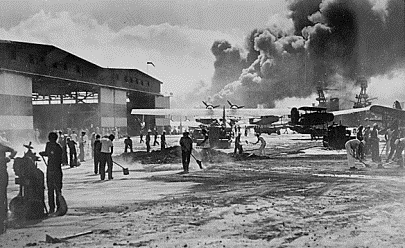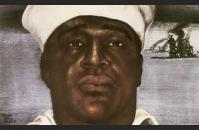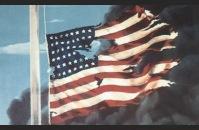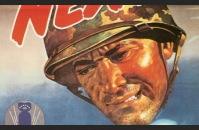PEARL HARBOR AT A GLANCE:

Image Gallery
“A Day of Infamy”: The Japanese Attack on Pearl Harbor
On December 7, 1941, the Japanese military launched a surprise attack on the United States Naval Base at Pearl Harbor, Hawaii. Since early 1941 the U.S. had been supplying Great Britain in its fight against the Nazis. It had also been pressuring Japan to halt its military expansion in Asia and the Pacific. With the Japanese attack on Pearl Harbor, the U.S. could no longer avoid war. On December 8, U.S. President Franklin Delano Roosevelt asked Congress for and received a declaration of war against Japan. On December 11, Germany and Italy, allied with Japan, declared war on the U.S. The United States had entered World War II.
Japanese Admiral Isoroku Yamamoto conceived the Pearl Harbor attack and Captain Minoru Genda planned it. Two things inspired Yamamoto’s Pearl Harbor idea: a prophetic book and a historic attack. The book was The Great Pacific War, written in 1925 by Hector Bywater, a British naval authority. It was a realistic account of a clash between the United States and Japan that begins with the Japanese destruction of the U.S. fleet and proceeds to a Japanese attack on Guam and the Philippines. When Britain’s Royal Air Force successfully attacked the Italian fleet at harbor in Taranto, Italy on November 11, 1940, Yamamoto was convinced that Bywater’s fiction could become reality.
On December 6, 1941, the U.S. intercepted a Japanese message that inquired about ship movements and berthing positions at Pearl Harbor. The cryptologist gave the message to her superior who said he would get back to her on Monday, December 8. On Sunday, December 7, a radar operator on Oahu saw a large group of airplanes on his screen heading toward the island. He called his superior who told him it was probably a group of U.S. B-17 bombers that had been scheduled to arrive that day and not to worry about it.
The Japanese attack on Pearl Harbor began at 7:55 that morning. The entire attack took only one hour and 15 minutes. Captain Mitsuo Fuchida sent the code message, “Tora, Tora, Tora,” to the Japanese fleet after flying over Oahu to indicate the Americans had been caught by surprise. The Japanese planned to give the U.S. a declaration of war before the attack began so they would not violate the first article of the Hague Convention of 1907. But the message was delayed and not relayed to U.S. officials in Washington until the attack was already in progress, turning Pearl Harbor into a sneak attack!
The Japanese strike force consisted of 353 aircraft launched from four heavy carriers. These included 40 torpedo planes, 103 level bombers, 131 dive-bombers, and 79 fighters. The attack also consisted of two heavy cruisers, 35 submarines, two light cruisers, nine oilers, two battleships, and 11 destroyers.
The attack killed 2,403 U.S. personnel, including 68 civilians, and destroyed or damaged 19 U.S. Navy ships, including 8 battleships. The three aircraft carriers of the U.S. Pacific Fleet were out to sea on maneuvers. The Japanese were unable to locate them and a planned 3rd wave of attack planes was never launched. The U.S. still had their carrier fleet intact.
The battleship USS Arizona remains sunken in Pearl Harbor with its crew onboard. Half of the dead at Pearl Harbor were on the Arizona. A United States flag flies above the sunken battleship, which serves as a memorial to all Americans who died in the attack. (A piece of the Arizona is displayed at the start of the Pacific Galleries)
Dorie Miller, a steward on the USS West Virginia, distinguished himself by courageous conduct and devotion to duty during the Japanese attack on Pearl Harbor. He first assisted his mortally wounded captain and then manned a machine gun, which he was not accustomed to operating, successfully destroying two Japanese aircraft. He was the first African American awarded the Navy Cross, the service’s highest award, for his actions during the attack.
The Japanese lost 29 aircraft and 5 midget submarines in the attack. One Japanese soldier was taken prisoner and 129 Japanese sailors and airmen were killed. Out of all the Japanese ships that participated in the attack on Pearl Harbor only one, the Ushio, survived until the end of the war. It was surrendered to the U.S. at Yokosuka Naval Base. When Admiral Yamamoto learned that his forces had not destroyed the U.S. aircraft carriers or completely destroyed the U.S. fleet, he feared that the United States, with its enormous industrial potential, would soon recover and fight back.
The United States did recover—and quicker than Yamamoto could have imagined. After only six months, the U.S. carrier fleet dealt a decisive blow to Yamamoto’s navy in June 1942 at the Battle of Midway, sinking four Japanese aircraft carriers. After this victory came the three-year U.S. island-hopping campaign and the eventual defeat of the Japanese Empire in August 1945.
Pearl Harbor by the Numbers
US Casualties at Pearl Harbor
Branch |
Killed |
Wounded |
|---|---|---|
Navy |
2,008 |
710 |
Army |
218 |
364 |
Marines |
109 |
69 |
Civilians |
68 |
35 |
Total |
2,403 |
1,178 |
U.S. Aircraft Damaged at Pearl Harbor
Lost |
Damaged |
|
|---|---|---|
Navy |
92 |
31 |
Army Air Corps |
77 |
128 |
U.S. Ships Damaged at Pearl Harbor
Type of Ship |
Damaged |
Destroyed |
Years Repaired |
|---|---|---|---|
Battleships |
8 |
2 |
1942-1944 |
Cruisers |
3 |
0 |
1942 |
Destroyers |
4 |
0 |
1942-1944 |
Auxiliaries |
5 |
1 |
1942 |
Download a printable version of this At A Glance
TAKE ACTION:


EDUCATION PROJECTS:
Student Travel – WWII Educational Tours
High school and college students, learn the leadership principles that helped win WWII on a trip to France or during a weeklong residential program in New Orleans. College credit is available, and space is limited.
See You Next Year! HS Yearbooks from WWII
Collected from across the United States, the words and pictures of these yearbooks present a new opportunity to experience the many challenges, setbacks and triumphs of the war through the eyes of America’s youth.
The Victory Gardens of WWII
Visit the Classroom Victory Garden Project website to learn about food production during WWII, find lesson plans and activities for elementary students, get tips for starting your own garden and try out simple Victory Garden recipes!
The Science and Technology of WWII
Visit our new interactive website to learn about wartime technical and scientific advances that forever changed our world. Incorporates STEM principles to use in the classroom.
Kids Corner: Fun and Games!
Make your own propaganda posters, test your memory, solve puzzles and more! Learn about World War II and have fun at the same time.






